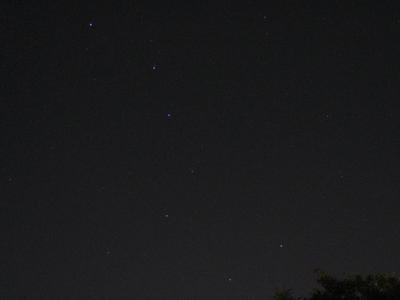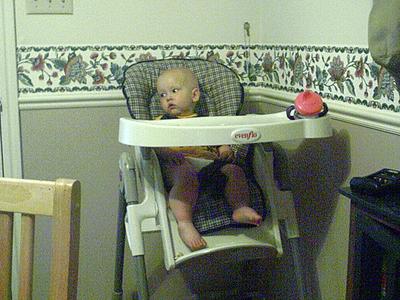Lately I've been shopping around for a digital camera. I guess the events leading up to it are twofold.
First, I discovered how entirely useless my 1.3MP Samsung Digimax 130 is when trying to photograph in low light. Take the planet pictures--the ones on my blog are frames captured from footage shot by my camcorder. The Samsung won't hold the shutter open long enough to get
anything in the same lighting conditions. I found myself digging through the manual trying to find out how to override the automatic settings--but of course there are no manual controls. Now that I know they're missing, I want a camera that can let me pick aperture stops and shutter speeds.
Second (and this is the real deal-breaker), the Samsung can only take decent pictures at 640x480. At full 1280x960 resolution, they look very heavily processed and interpolated. I wouldn't be surprised at all to find that the CCD itself only takes 640x480 and the camera scales the pictures
up--they look that bad. Anyhow, since our CompactFlash card died after maybe a month, though, we just used the camera's 8MB internal memory, which could hold 24 or so VGA-quality pictures, and that worked okay for emailing photos and putting them on the web. But when my wife tried to order a print through Wal-Mart's online service, it balked and said we need better resolution.
So lately I've been looking into getting a new digital camera. My budget is about $200. In that range, it looks like I could either get a good 3.2MP camera (the Canon Powershot A510 looks promising, and the Minolta DiMAGE Z10 looks like fun too, but a little bulky), or I could get a lousy 5MP camera (like the Olympus D-595, whose pictures looks absolutely horrible at full resolution, at least in the reviews I've seen). Or, if I stretched my budget just a little, perhaps I could get a promising 4MP camera (the Sony DSC-S60). Maybe the Canon Powershot A520 (the 4MP version of the A510) would be a good choice too, except that its pictures are substantially noisier than the A510 and I'm not convinced a bigger but noisier image is better.
So right now I've pretty much narrowed it down to two choices--the Canon Powershot A510 and the Sony Cybershot DSC-S60. Here are what I see as the pros and cons of each.
Canon Powershot A510 (3.2MP, about $180)[Pros]
4x optical zoom
Uses SD media
Uses standard mini-B USB cable
Supports aperture priority, shutter priority modes
Has image orientation sensor
[Cons]
Lower resolution than the Sony
Shutter lag ~ 1 second
Flash recharge ~ 7 seconds
USB 1.1 / PTP only
Low fps, time limited movie mode
Sony Cybershot DSC-S60 (4.1MP, about $210)[Pros]
Good image quality
Shutter lag ~ 0.3 second
Flash recharge ~ 3 seconds
USB 2.0 / MSC + PTP
Slightly larger LCD (2" as opposed to the Canon's 1.8")
[Cons]
3x zoom as compared to the Canon's 4x
No orientation sensor
No aperture priority/shutter priority mode (although it does have a full manual mode, albeit with only two aperture settings to choose from)
Uses overpriced Sony Memory Stick media
Uses all-in-one proprietary video+audio+USB monstrosity instead of a standard mini-B USB cable
"Cybershot" is a dumb name
Right now I'm leaning toward the Sony, mostly due to the low shutter lag and fast flash recycle time. But manually rotating portrait mode images can be tedious, and the Canon's 4x zoom might come in handy to. Same goes for the shutter priority mode. So I haven't quite made up my mind.
This morning I helped fix my grandmother's computer, and I mentioned how I was shopping around for a digital camera. She let me borrow Grandpa's Powershot A80 and I've been playing with it for awhile. I haven't gotten too much figured out yet, but other than the relatively slow auto focus (it's almost a second), I like what I see. I went outside to take a few snapshots, and on my way back in the house, I saw a quarter on the sidewalk. So I put Grandpa's Canon in macro mode and took a close-up.

That's a pretty slick macro shot if I do say so myself. ;)

















